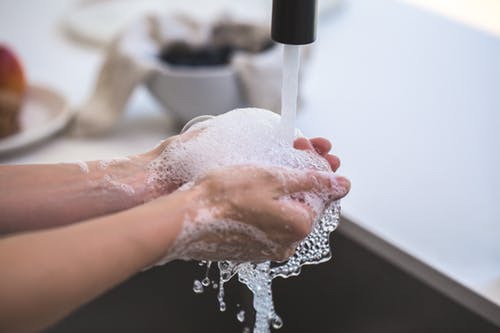Have you ever walked into a place and felt immediately at ease—or quite the opposite, entirely on edge? The ambiance of an environment can significantly influence your comfort level, especially in healthcare settings. Cleanliness should be at the forefront of healthcare professionals’ minds, not only because it prevents the spread of infections but also because it plays a pivotal role in building and maintaining patient trust.
1. Perception of Safety and Hygiene
When hospitals, clinics, and other healthcare settings are visibly clean and well-maintained, patients feel reassured about the quality of care they will receive. Clean surroundings signal that the facility prioritizes patient safety and takes infection control seriously, which builds trust and confidence among patients.
In an office setting, the same principles apply. Employees and clients expect a clean workspace, which reflects the company’s professionalism and attention to well-being. Professional Kitchener commercial office cleaning services ensure that offices are not just tidy but sanitized, giving everyone peace of mind and projecting an image of reliability and high standards.
2. Reduced Risk of Infections
Proper cleaning and disinfection protocols help reduce the risk of healthcare-associated infections (HAIs). Patients trust healthcare facilities that maintain high standards of cleanliness because they believe they are less likely to contract infections during their stay. Clean environments convey a commitment to patient well-being and contribute to positive health outcomes, fostering trust between patients and healthcare providers.
Dental offices, much like other healthcare settings, require meticulous attention to cleanliness. Families trust their dental practices to provide a safe, hygienic space for treatments. Top-notch dental office cleaning services Kitchener helps ensure this trust is well-placed by rigorously disinfecting all areas and significantly reducing the risk of cross-contamination.
3. Improved Patient Experience
Cleanliness contributes to a positive patient experience by creating a comfortable and welcoming environment. Patients feel more at ease and confident in the care they receive when they are in a clean and tidy setting. Clean facilities also reflect attention to detail and professionalism, which enhances patient satisfaction and reinforces trust in healthcare providers.
4. Enhanced Communication and Education
Cleaning practices in healthcare settings serve as opportunities for communication and education. Patients appreciate transparency regarding cleaning protocols and infection prevention measures.
When healthcare providers openly communicate about cleaning procedures and involve patients in maintaining cleanliness, they demonstrate a commitment to patient safety and foster trust. Educating patients about the importance of hand hygiene and other infection control practices further reinforces trust and empowers them to take an active role in their care.
5. Demonstration of Respect and Dignity
Cleanliness is often associated with respect and dignity in healthcare settings. Patients feel valued and respected when they are cared for in clean and well-maintained facilities. Conversely, dirty or unkempt environments can undermine patient trust and dignity. Maintaining cleanliness shows that healthcare providers prioritize the comfort and well-being of patients, which strengthens the patient-provider relationship.
6. Transparency in Cleaning Practices
When healthcare providers are open about their cleaning protocols, it can increase patient trust. Posting cleaning schedules or offering information about the products and methods used can make a big difference. Patients appreciate knowing that the facility takes their safety seriously, to the extent of being transparent about how they maintain a clean environment.
A Cleaner Future in Healthcare
The future of healthcare is poised to embrace innovative cleaning technologies and methods that not only ensure cleaner environments but also enhance operational efficiency. Here’s a glimpse into what the future holds:
-
Room-Cleaning Robots: Automated room-cleaning robots are revolutionizing the way healthcare facilities maintain cleanliness. These robots can navigate hospital rooms and other spaces autonomously, using advanced sensors and algorithms to detect and eliminate pathogens. By leveraging robotics, healthcare providers can achieve thorough and consistent cleaning protocols, reducing the risk of healthcare-associated infections and freeing up staff to focus on patient care.
-
No-Touch Disinfection Systems: No-touch disinfection systems utilize advanced technologies such as hydrogen peroxide vapor or ultrasonic waves to disinfect surfaces and air in healthcare environments. These systems offer a hands-free approach to disinfection, ensuring comprehensive coverage of high-touch surfaces and hard-to-reach areas. By eliminating the need for manual cleaning and disinfection, these systems enhance efficiency and minimize the risk of human error.
-
UV Light Cleaning Tools: UV light has long been recognized for its germicidal properties, and its application in healthcare cleaning is expanding. UV light cleaning tools, such as UV-C disinfection devices, can effectively kill bacteria, viruses, and other pathogens on surfaces and in the air. These tools offer a chemical-free and environmentally friendly method of disinfection, reducing reliance on traditional cleaning agents and minimizing exposure to harmful chemicals for both patients and staff.
-
Integration of IoT and Data Analytics: The Internet of Things (IoT) and data analytics are transforming how healthcare facilities monitor and manage cleanliness. Smart sensors embedded in equipment and infrastructure can collect real-time data on environmental conditions, cleaning activities, and occupancy levels. This data can be analyzed to optimize cleaning schedules, identify areas that require attention, and track compliance with cleaning protocols. By harnessing the power of IoT and data analytics, healthcare providers can achieve greater transparency, accountability, and efficiency in cleaning operations.
-
Human-Centric Approach: While advanced cleaning technologies offer significant benefits, the human touch remains essential in healthcare cleaning. Cleaning staff play a vital role in maintaining cleanliness, addressing immediate cleaning needs, and providing personalized care and attention to patients. The integration of advanced technologies should complement, rather than replace, the human element in healthcare cleaning, ensuring that patients continue to receive the compassionate care and attention they deserve.
Final Thoughts
Cleaning in healthcare is not just an operational necessity; it’s a cornerstone of trust and an integral part of the healing process. It supports both physical and mental well-being, helps combat the spread of infections, and ensures that healthcare facilities can live up to their primary mission: to provide the best possible care.

